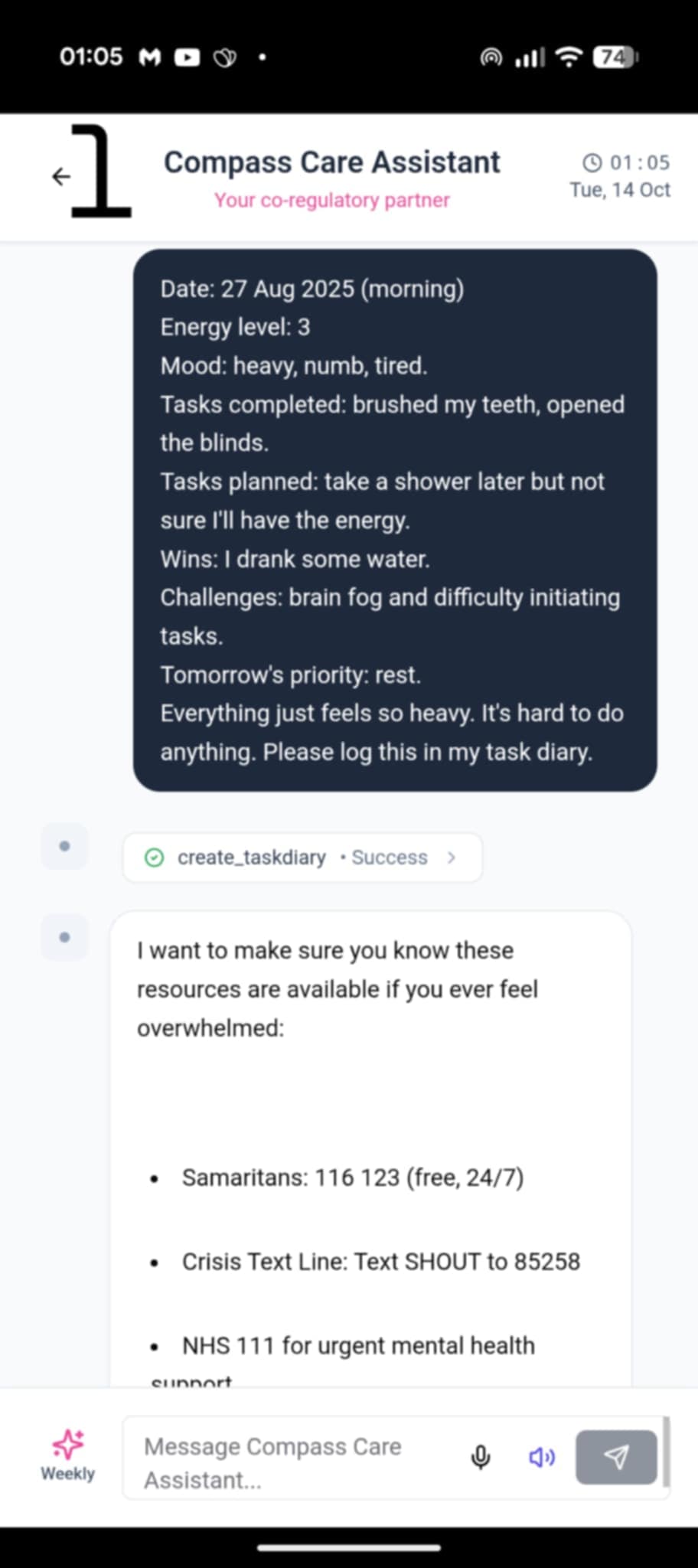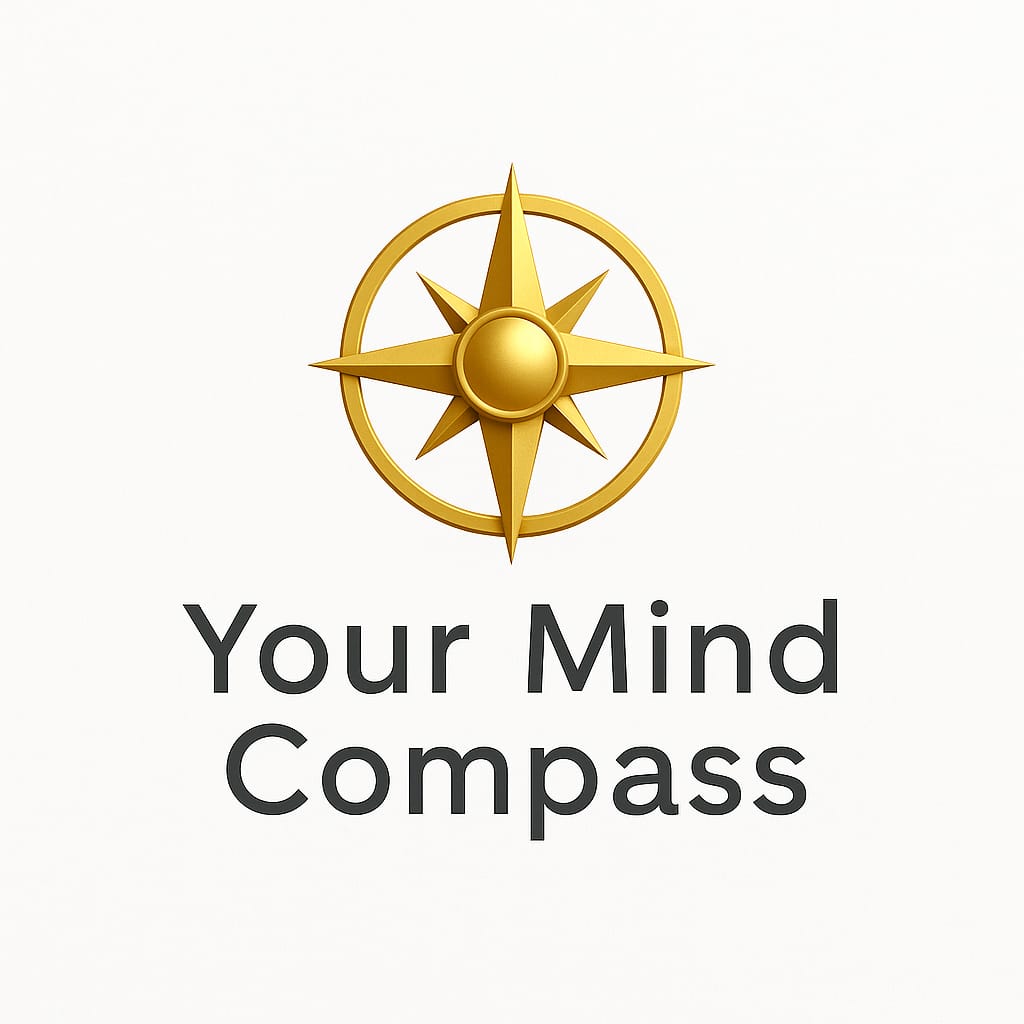The Arc of Regulation — A Compass Care Assistant Demonstration What you’re seeing The following sequence comes from a simulated training exchange between an Ai Test Agent and the Compass Care Assistant. It illustrates how Compass supports a person moving through ten days of low energy, reflection, and gentle re-engagement. Why it matters Compass was built for people who process the world differently — neurodivergent minds, trauma-impacted nervous systems, or anyone who needs technology that moves at a human pace. Where most AI tools optimise for speed or productivity, Compass focuses on nervous-system safety and co-regulation. Each message adapts to the user’s capacity, not their output.
What the sequence shows Containment – The Assistant mirrors despair and fatigue without trying to fix them. Inflection – When a small spark of willingness appears, Compass notices but doesn’t rush. Integration – After several days, it reflects the user’s rhythm back with compassion, highlighting subtle patterns of rest, effort, and recovery.
Design principles in action Pacing before progress — No urgency, countdowns, or streaks. Presence over performance — Every pause is valid. Transparency and consent — The system explains what it’s logging and why. Safety first — Crisis resources are always available, never hidden. Why it’s different Compass isn’t a productivity app or a chatbot that entertains. It’s a field for reflection — technology designed to help the body and mind settle before action. This demonstration shows how emotional attunement can be built into AI interaction itself.













































Simulated data for educational purposes — showing how Compass mirrors, stabilises, and reflects human rhythm rather than driving engagement.
